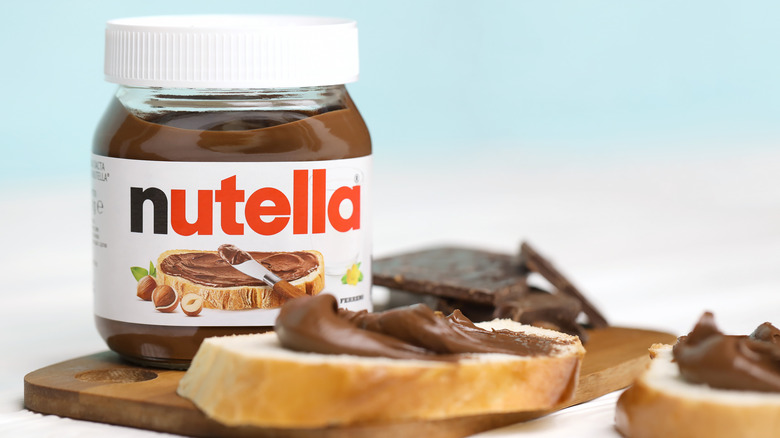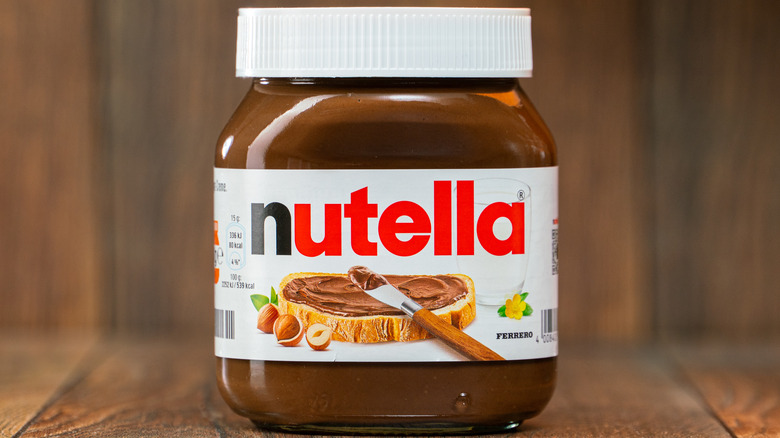The Ridiculous Amount Of Nutella Produced Every Year
If you've ever slathered Nutella on toast, dipped bananas and apple slices into it, filled baked goods with it, or even just eaten it straight out of the jar with a spoon, you know just how amazing it is. The sweet, creamy, dreamy chocolate-hazelnut spread has taken the world by storm, and its iconic brown, red, and white jars can be found in kitchen pantries everywhere.
Nutella was invented in the year 1951 by an Italian baker named Pietro Ferrero, according to Insider. His recipe was heavily inspired by gianduja, a sweet chocolate-hazelnut paste that was invented around 1800, when there was a scarcity of chocolate in Europe. In 1964, Pietro's son Michele began marketing the product across Europe, after which it gained massive popularity and diehard loyalty.
Today, Nutella is used in many ways — from sweetening peanut butter sandwiches, adding fragrant richness to desserts, being infused into hot cocoa and cocktails, or simply creating a sweeter tasting flavor profile to any food it touches. In fact, Nutella is so outrageously popular that its production rate is more than sky high ... literally.
How much Nutella is produced in a single year?
Let's start with the basic economic principle of supply and demand. Essentially, the desire of a product or service determines how much of it is created or distributed. As far as Nutella goes, well, people love it. To be even clearer — a considerable number of people really, really love it. So, just how much Nutella is made to keep up with consumer demand?
In just a single year, a whopping 730 million pounds — 365,000 tons — of Nutella is produced, according to Eat This, Not That! To put this quantity into perspective, you could circumnavigate the globe nearly twice or line the Great Wall of China almost eight times with the number of jars of Nutella sold annually. In fact, the delicious spread uses 25 percent of the world's hazelnut supply to create its superstar product. That's a lot of chocolate-hazelnut goodness.

